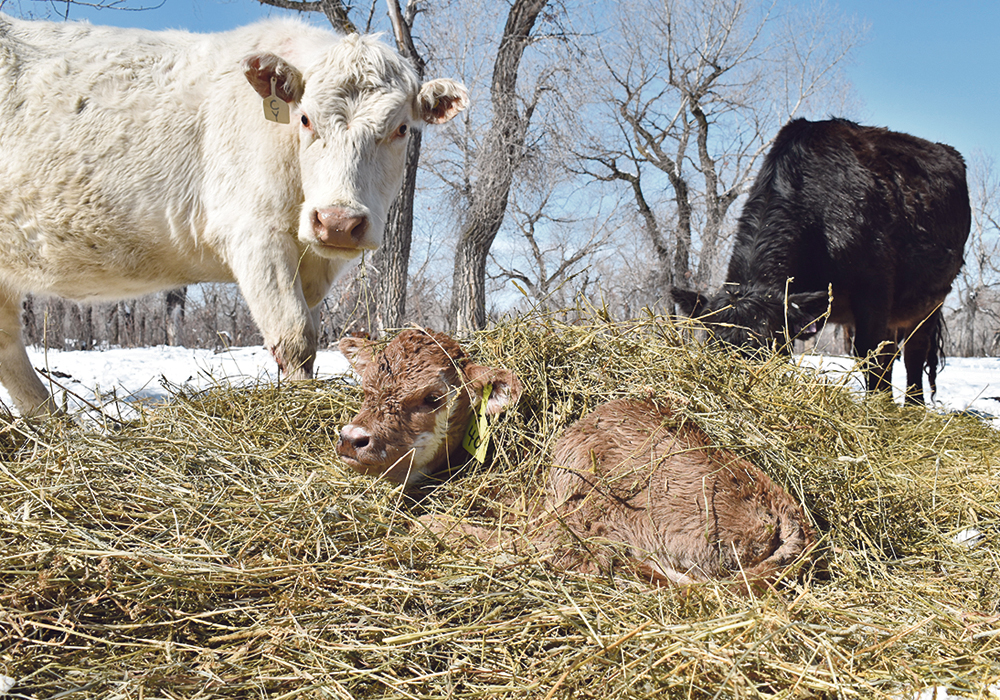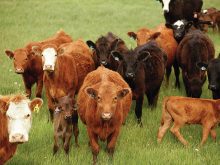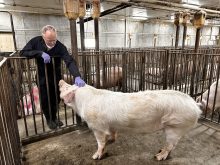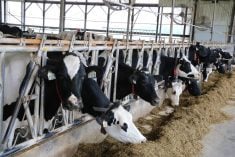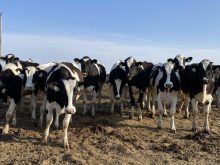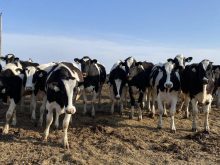Previously, I wrote about the economic importance of the calf-crop percentage. The calf-crop percentage is defined as the percentage of calves weaned per cow exposed to the bull.
The calf-crop percentage is an easily measurable productivity trait and doesn’t require a lot of detailed records other than some inventory numbers at various times of year. It can be affected by a number of factors including reproductive fertility or pregnancy rates, abortions, and calf death losses.
A recent paper published in the scientific journal PLOSONE by Dr. Cheryl Waldner and colleagues at the University of Saskatchewan gives some important benchmarking data that relates to calf-crop percentage for cow-calf herds in Western Canada. Benchmarking data helps to define what is normal and what is a reasonable goal or target for some of these important productivity measures.
Read Also

Beef check-off collection system aligns across the country
A single and aligned check-off collection system based on where producers live makes the system equal said Chad Ross, Saskatchewan Cattle Association chair.
This study summarizes the productivity findings from the Western Canadian Cow-Calf Surveillance Network, which followed about 100 cow-calf herds in the prairie provinces from 2014-17. It was funded by the Canadian Cattlemen’s Association through the Beef Cattle Research Council and also received research funding from Saskatchewan Agriculture.
Cow-calf herds were recruited from across Manitoba, Saskatchewan and Alberta to match the geographical distribution of beef herds in these regions and to match the distribution of smaller herds (those with 100 to 300 cows) and larger herds (those with more than 300 cows) in those regions based on the 2011 Census of Agriculture. All of the herds had at least 100 cows at the time of enrolment in the study.
For part two of this article, I’d like to focus on the calf losses reported from the herds in this study. The authors of the study collected information from these herds over a four-year period, which included the percentage of cows that aborted, the percentage of calves that died from birth to 24 hours and the percentage of calves that died from 24 hours to weaning.
Remarkably, the averages for these herds are fairly consistent from year to year, but we might have seen more variability if the study had carried on over the 2018 calving season, which probably had higher calf mortality due to an extremely cold and snowy spring.
The incidence of abortion is probably the toughest variable to measure in this study. Many producers with extensively managed operations will not observe abortions on pasture and the cow may just appear open at pregnancy testing time. In this study, the abortion incidence included observed abortions and also cows that were confirmed pregnant and then failed to calve.
The average abortion incidence for cows was 0.8 percent of animals over all of the observations and slightly higher for heifers at 1.3 percent. Once again averages only tell part of the story. About 25 percent of the herds had no abortions at all and the worst five percent of herds had abortion rates of 2.6 percent and 5.6 percent for cows and heifers, respectively.
Calf death from birth to 24 hours was fairly consistent from year to year, and as we would expect, the levels of calf losses were higher in calves born to heifers than in cows. Heifers are much more prone to calving difficulties and a significant proportion of these early calf losses can probably be directly attributed to calving problems.
Over the four years of this study, the average mortality from birth to 24 hours in calves from cows averaged 2.1 percent and in calves from heifers averaged 3.6 percent. The top 25 percent of herds had less than one percent death loss in calves from birth to 24 hours. The bottom 25 percent of herds recorded death loss in calves from birth to 24 hours greater than 2.8 percent in cows and 5.3 percent in heifers.
Finally, the authors reported calf losses from 24 hours to weaning, and over the four years of the study the calf death loss during this period was 2.5 percent for cows and slightly higher at 2.9 percent in heifers. There was more variability in the death loss from calves born to heifers and the top 25 percent of herds had less than one percent calf losses from 24 hours till weaning. In contrast, the bottom 25 percent of herds had calf death losses greater than 3.3 percent for cows and 4.6 percent for heifers.
There were some year-to-year variation in these numbers, which was more apparent for calf losses than for pregnancy rates. However, this variation was always smaller than the variation that occurred between herds.
It did appear that larger herds had a slightly higher risk for calf losses, which might be explained through an increased biosecurity risk if there are more purchased animals present in those larger herds.
This study provides some excellent benchmarks for calf loss in beef herds for Western Canada. The herds in this study all worked closely with a veterinary practice and were probably fairly well managed herds overall. It allows you to measure your own herd and compare how you measure up.
If you’d like to read the article it is available as an open access online article here.
John Campbell is a professor in the department of Large Animal Clinical Sciences at the University of Saskatchewan’s Western College of Veterinary Medicine.



